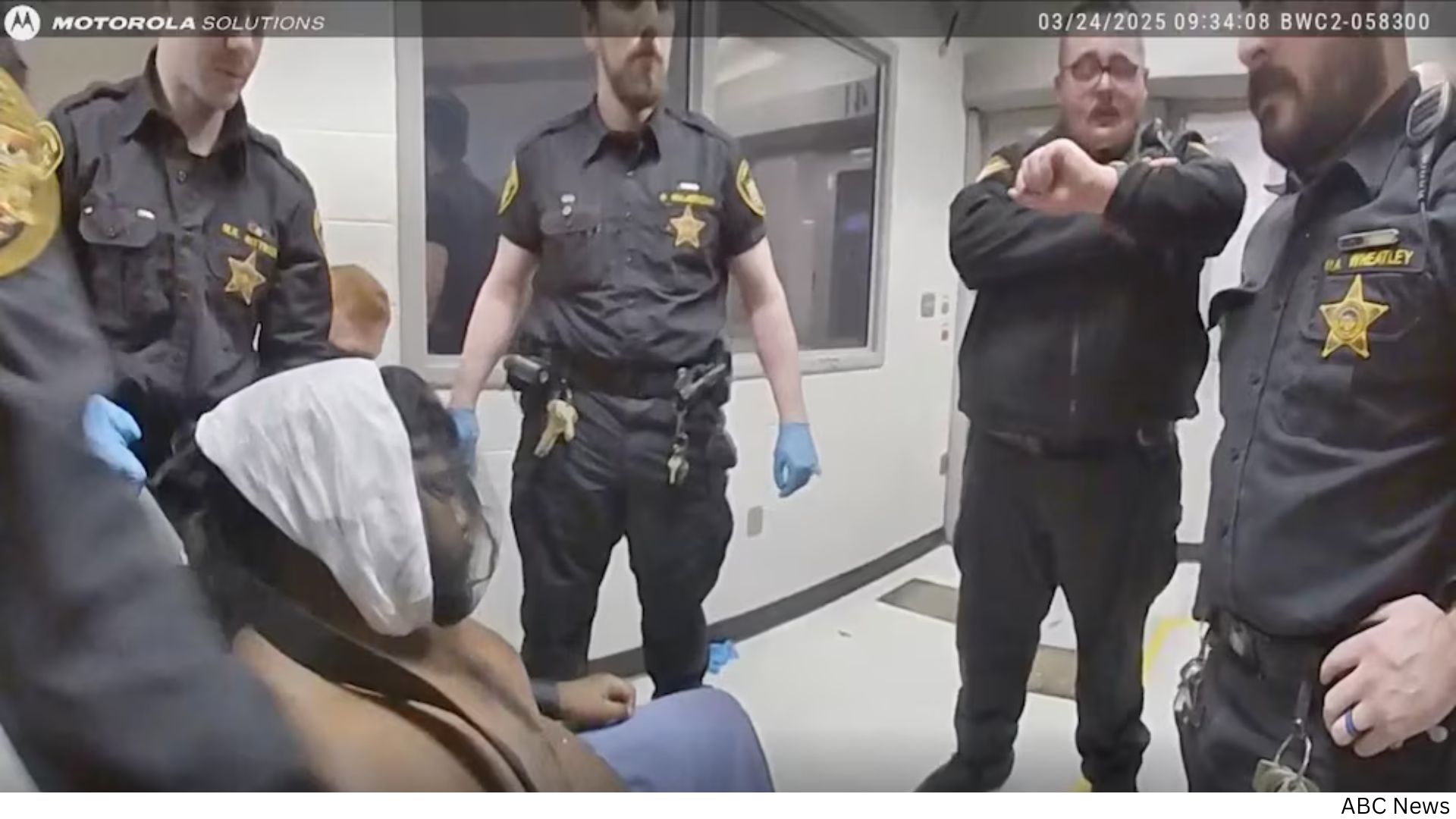Family of Christian Black Reaches $7 Million Settlement With Montgomery County, Demands Criminal Accountability
Dayton, Ohio (AP) — The family of Christian Black, a 25-year-old man who died after being restrained in the Montgomery County Jail earlier this year, has reached a $7 million settlement with the county. While the agreement provides financial relief, Black’s family has made it clear that their fight for justice is far from over. They are calling for greater accountability, including criminal charges against the officers involved, and systemic reforms to prevent future tragedies.
A Life Cut Short
Christian Black’s death on March 26 shocked the Dayton community and sparked outrage across Ohio. Black had been arrested after crashing a stolen car, according to police. Once booked into the Montgomery County Jail, surveillance video captured his final hours in haunting detail.
The footage, released by Black’s family and attorneys, showed him inside a jail cell, visibly distressed, yelling, and repeatedly striking his fist and head against a glass door. Nine deputies were seen gathered outside the cell before several rushed in. They restrained Black on the floor, handcuffed him, and eventually forced him into a restraint chair.
What happened next is at the center of both the lawsuit and the family’s demands for justice. While strapped in the chair, Black’s head slumped and his body went limp. Jail staff appeared to check his eyes, take his blood pressure, and rub his chest, but his condition did not improve. According to the family’s attorneys, nearly nine minutes passed before CPR was administered. By then, it was too late.
Black was transported to a hospital but never recovered. Two days later, he was pronounced dead.
Cause of Death and Official Findings
The Montgomery County Coroner’s Office ruled Black’s death a homicide, citing positional asphyxia as the likely cause. Positional asphyxia occurs when the chest cannot expand properly, cutting off oxygen to the body. The finding added fuel to the family’s calls for justice, as it confirmed what many had already suspected: that Black died not from natural causes, but as a direct result of how he was restrained.
Despite this determination, no jail personnel have faced criminal charges to date. This absence of accountability has become a central focus of the Black family’s ongoing fight.
The Settlement Agreement
On Tuesday, attorney Michael Wright, who represents the Black family, announced that Montgomery County agreed to a $7 million settlement. He described it as the county taking responsibility for what happened but emphasized that monetary compensation is not enough.
“This settlement brings some level of acknowledgment,” Wright told reporters. “But what the family wants more than anything is change — and accountability. Christian’s death cannot simply be written off with a check.”
County officials indicated they plan to take steps to improve mental health resources within the jail system. Among the proposals is adding inpatient beds for individuals with urgent psychiatric needs, an acknowledgment that Black’s crisis was mishandled. Still, for the family, these measures fall short.
A Mother’s Pursuit of Justice
At a press conference, Christian Black’s mother, Misty Black, delivered a powerful and emotional statement. She expressed gratitude for the settlement but insisted that it does not mark the end of her mission.
“This check doesn’t stop the criminal side,” she said. “It’s not going to make me go away. I’m here. Justice for Christian Black. I won’t stop until justice is served.”
Her words underscored the family’s determination to pursue justice beyond the civil case, pressing for criminal charges against the deputies involved in restraining her son.
Broader Implications for Jail Reform
The case has drawn national attention as another tragic example of how individuals experiencing mental health crises are often failed by the criminal justice system. Advocates argue that Black’s death illustrates the urgent need for reform, particularly in how correctional facilities handle vulnerable inmates.
Experts have long warned that restraint chairs and prone restraint methods carry significant risks of asphyxia and death. Despite this, such practices remain common in jails and prisons across the country. Critics say that without stronger oversight, training, and accountability, similar deaths are likely to continue.
In response to the settlement, civil rights organizations have renewed calls for independent monitoring of jails, expanded diversion programs for mentally ill individuals, and comprehensive de-escalation training for officers.
The Road Ahead
While the financial settlement closes one chapter of the legal battle, the fight for accountability presses on. The Black family and their legal team have signaled that they will continue to pursue justice through every avenue available, including pushing for criminal prosecutions.
“The coroner ruled Christian’s death a homicide. That alone demands accountability,” attorney Wright said. “Until there are consequences for those responsible, justice will remain incomplete.”
For Misty Black, the loss of her son is an unending source of pain, but also a call to action. Her vow to continue fighting reflects not just a personal quest for justice but also a broader demand for systemic change.
Conclusion
The $7 million settlement between Montgomery County and the family of Christian Black represents a significant acknowledgment of wrongdoing, but for his loved ones, it is only the beginning. With his death officially ruled a homicide and no criminal charges filed, the case raises troubling questions about accountability within the justice system.
As the family presses forward, the memory of Christian Black stands as both a tragedy and a rallying cry — a reminder that reform is urgently needed to protect those most at risk behind bars.








.png)